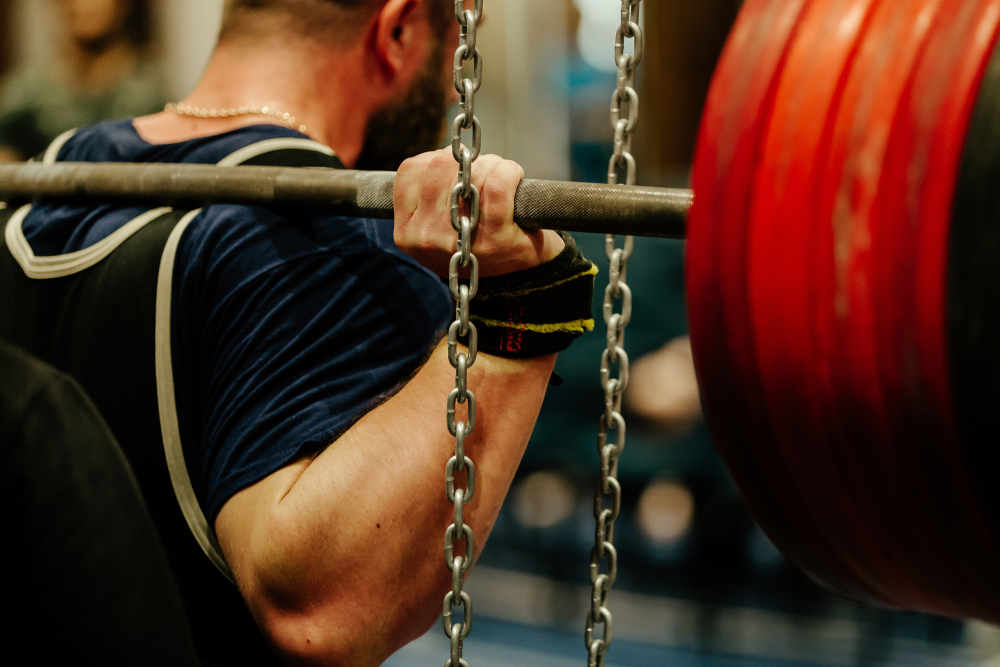Strength athletes require two key aspects (among others of course) for success in their lifting: Strength & Power. Unfortunately, there’s often a confusion that surrounds training both of these at once, especially when lifters are programming for themselves.
Typically athletes understand power involves moving weight with greater speed and force, while strength involves moving heavier loads. One method many lifters use to increase power production is: Complex training.
This style of training focuses on combining exercises (dynamic resistance + power ballistic) to enhance power production through something called Post-Activation Potentiation (PAP). It seems simple enough – combine strength + power movements in the same set to produce power – but it’s a little more complicated than that.
So where does the lack of program knowledge come in?
There are usually four key things lifters don’t consider before utilizing complex training in their programs. A study published in December of 2016, highlights these four characteristics and gives guidelines on each that they’ve taken from multiple studies assessing complex training.

1. Intra-Complex Recovery Times
Multiple studies have suggested a plethora of rest times (3-10 minutes) to use in-between exercises and sets. Higher rest times aren’t realistic for the common athlete or coach, so what are realistic rest times? The authors of the study suggested using…
- Intra-Complex Recovery between exercises ~3-4 minutes
- Intra-Complex Recovery between sets ~5 minutes
Before you take this information and run with it, keep reading. There are certain athletes who will benefit more than others with complex training. The characteristics below can give you guidelines on how to use complex training for yourself and others.
2. Training Status
Athletes with a moderate to high training status benefit most from complex training. Training status is basically an athlete’s ability to handle the heavy stimulus placed on it. This is important because PAP relies on athletes to stay over the PAP/fatigue ratio.
- Athletes with a moderate – high training status benefit most
Newer trainees will find themselves more fatigued after the resistance movements, which decreases their plyometric/ballistic performance, aka decreasing performance.
3. Training History
This point is similar to training status, but entails the amount of time an athlete has spent lifting. A longer weight room exposure will ensure an athlete’s muscle, nervous system, and gym knowledge are all well-equipped to handle a highly demanding PAP protocol.
- Authors suggest training history of >2 years to be sufficient
If an athlete doesn’t understand movement mechanics, the stimulus, or becomes too fatigued during a set, then complex training will be counterproductive.
4. Strength Levels
This is where complex training can get a little dicey. A stronger muscle will respond better to complex training due to its ability to increase motor recruitment, as opposed to fatiguing. Not to mention, a stronger muscle will be able to move more weight, which increases the stimulus. The authors suggested both lower and upper body strength levels for practical complex training benefit.
- Lower body strength levels – >1.8 relative lower body 1-RM
- Upper body strength levels – >1.4 relative upper body 1-RM
If you meet both requirements of training history and training status, then my guess is it won’t be too difficult to match the suggested strength requirements. These strength level suggestions are important to note and keep in mind, especially for coaches using complex training for athletes in their programs.
Common Complex Pairings + Structure
To give you context in what complex training looks like in a program I’ll provide a few examples you could use/try. Note that complex training can take multiple forms with different loads, rep schemes, and rest times. These all should be catered to your tolerance, goals, and experience. Also, program complex training early in a workout as it’s a highly demanding protocol.
Lower Body / Posterior Chain Examples
Back Squat x 3 (80% 1-RM) ~ 3-4 minute rest ~ Box Jump x 3 ~ 5-minute rest
Front Squat x 3 (75% 1-RM) ~ 3-4 minute rest ~ Squat Jump x 5 ~ 5-minute rest
Deadlift x 3 (82% 1-RM) ~ 3-4 minute rest ~ Kettlebell Swings x 8 ~ 5-minute rest
Box Squat x 5 (75% 1-RM) ~ 3-4 minute rest ~ Seated Box Jump x 3 ~ 5-minute rest
Single-Leg Side Stepup x 3 (65% 1-RM) ~ 3-4 minute rest ~ Single-Leg Low Box Jump ~ 5-minute rest
Upper Body Examples
Bench Press x 3 (78% 1-RM) ~ 3-4 minute rest ~ Clap Pushup x 4 ~ 5-minute rest
Shoulder Press x 3 (75% 1-RM) ~ 3-4 minute rest ~ Overhead Medicine Ball Throw x 5 ~ 5-minute rest
—
Complex training can be a useful tool to develop power in any strength athletes workout program. Use these practical applications to assess your body’s readiness to benefit most from complex training.